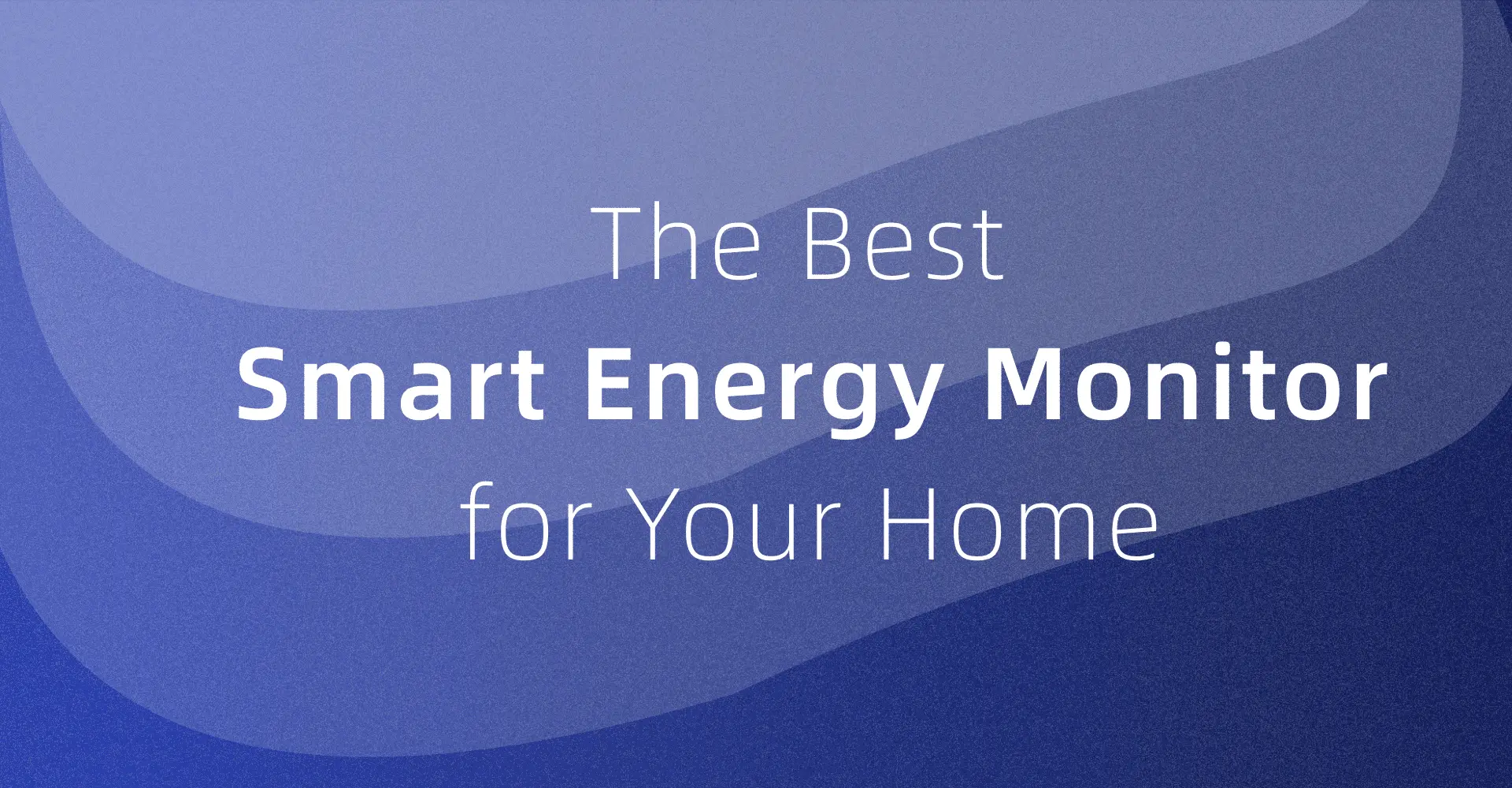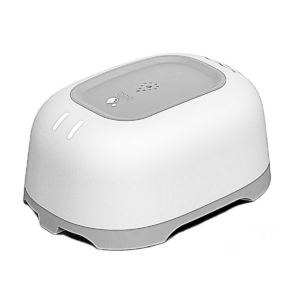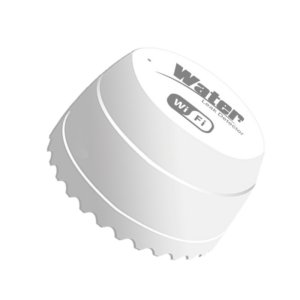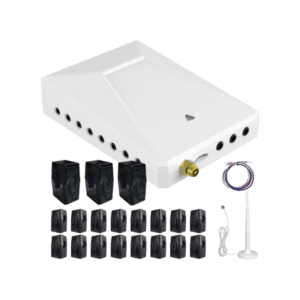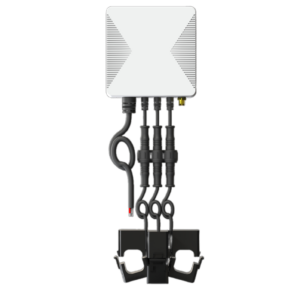"I had no idea my old garage freezer was silently eating up $20 a month—until I installed a smart energy monitor."
— Jason T., homeowner in Ohio
In a world of rising energy prices and climate concerns, knowing exactly where your home’s electricity is going isn’t just smart—it’s essential. And in 2025, smart energy monitors have become one of the most effective tools for homeowners looking to cut costs, reduce waste, and future-proof their homes.
But with so many options on the market, how do you choose the right smart energy monitor for your home?
Let’s break it down—real benefits, real features, real-life scenarios.me's electricity usage, helping you reduce waste, lower your bills, and live more sustainably.
1. Why You Need a Smart Energy Monitor
✅ 1. See What’s Wasting Energy—Right Now
Most homeowners are shocked the first time they open their energy app. That second fridge in the basement? That “off” TV still pulling power?
Real-time visibility means you’re no longer guessing.
📊 *According to the U.S. Department of Energy, standby (or "vampire") loads can account for up to 10% of your electricity bill.*¹
With a smart monitor like the Grus WattPanel-2X, you’ll spot these hidden costs immediately.
✅ 2. Save 10–30% on Electricity Bills
It’s not magic—it’s insight. By tracking usage patterns, you can shift high-demand devices to off-peak hours, automate shutoffs, and even unplug what you don’t need.
💡 One user with a heat pump and solar setup saved $520 in 12 months by using a smart monitor to time heavy loads and optimize self-consumption.
✅ 3. Maximize Your Solar & Battery Setup
If you’ve invested in solar panels or a home battery, a standard utility bill won’t give you enough insight. You need to track:
- Solar production vs. actual usage
- Real-time grid draw vs. battery discharge
- ROI from your solar setup
Grus WattNet-3 lets solar homeowners see all this on one screen.
2. Types of Smart Energy Monitors
Understanding the basic types will help narrow down your choices.
2.1 Whole-Home Energy Monitors
Installed in your breaker box, they give you complete visibility of household usage.
Great For:
- Homeowners wanting full control
- Solar panel or EV charger owners
- Families looking to reduce overall usage
📌 Top Pick: Grus WattPanel-2X
Works with 120/240V split-phase panels common in U.S. homes.
🏢 Three-Phase Monitors
For small buildings, townhouses, or multi-unit residences with 120/208V three-phase panels.
📌 Top Pick: Grus WattPanel-3X
Tracks each phase independently and supports solar & battery monitoring.
2.2 Smart Plugs and Socket-Level Monitors
Plug one into an outlet, and it tracks the power draw of just that appliance.
Great For:
Finding “energy hogs”
Renters
Device-specific monitoring (e.g., space heaters, dehumidifiers)
2.3 Utility Company Smart Meters
✅ Provided by your electricity provider
✅ Track your entire house’s energy usage
✅ Usually offer historical data via an online dashboard
📌 Limitation: Limited real-time granularity and no appliance-level detail.
3. Key Features to Look for in a Smart Energy Monitor
Choosing the right monitor isn't just about price—it's about finding the features that fit your lifestyle.
| Feature | Why It Matters | Real-World Use |
|---|---|---|
| Real-Time Monitoring | Spot problems as they happen | “The furnace ran all day while I was away?!” |
| Circuit-Level Tracking | Monitor rooms or appliances separately | Great for tracking HVAC vs. kitchen usage |
| AI Analysis | Get smart suggestions | “Your dishwasher costs $6 more when run at 6 PM—try 10 PM.” |
| Smart Home Integration | Automate and voice control devices | Works with Alexa, Google, SmartThings |
| Solar & Battery Support | Track energy generation and storage | Especially helpful for off-grid or time-of-use plans |
| Mobile App & Alerts | Stay informed from anywhere | “Your water heater is using double the normal load.” |
4. Top Smart Energy Monitor Recommendations for 2025
Now that you know what to look for, let’s dive into the top smart energy monitors available in 2025. We'll compare their features, advantages, and best-use scenarios.
4.1 Grus WattPanel-2X (Split-Phase 120/240V Monitoring)
✅ Best For: Single-family homes in North America with 120/240V service.
✅ Key Features:
- Real-time monitoring of entire home electricity usage.
- Circuit-level expansion supported via smart plugs.
- Easy DIY installation with CT clamps.
- Solar and battery system compatible.
- Seamless integration with SmartThings, Alexa, and Google Home.
- Mobile app with AI-driven efficiency recommendations.
🔹 Unique Advantage:
Perfect for homeowners wanting full transparency and easy optimization of their household energy.
4.2 Grus WattNet-3 (Three-Phase 120/208V Monitoring)
✅ Best For: Multi-unit residences, small commercial buildings, townhouses.
✅ Key Features:
- Real-time three-phase energy monitoring (L1, L2, L3).
- Circuit-level disaggregation possible.
- Designed for 120/208V Wye-configured panels.
- Tracks solar PV and battery usage data.
- Supports smart load balancing across phases.
- Wi-Fi connectivity with cloud-based reporting.
🔹 Unique Advantage:
Ideal for apartment managers, business owners, and those with small-scale solar energy systems.
4.3 Smart Plug-Level Monitors (General Brands)
✅ Best For: Renters and device-specific monitoring.
✅ Key Features:
- Measures power usage of individual appliances.
- Often includes scheduling and automation functions.
- Inexpensive and easy to move around.
🔹 Unique Advantage:
Portable and great for identifying energy-hogging appliances like refrigerators, dehumidifiers, and old HVAC units.
4.4 Comparison Table: Best Smart Energy Monitors for 2025
| Feature | Grus WattPanel-2X | Grus WattNet-3 | Smart Plug Monitors |
|---|---|---|---|
| Best For | Homes (120/240V) | Multi-units (120/208V) | Single devices |
| Real-Time Monitoring | ✅ Yes | ✅ Yes | ✅ Yes |
| Circuit-Level Tracking | ⚡ Optional | ⚡ Optional | ⚡ Single device only |
| Solar/Battery Monitoring | ✅ Yes | ✅ Yes | ❌ No |
| Smart Home Integration | ✅ Yes | ✅ Yes | ⚠️ Limited |
| Installation Difficulty | 🛠️ Moderate (DIY possible) | 🛠️ Moderate (Professional suggested) | 🛠️ Very Easy |
| Mobile App Support | ✅ Full | ✅ Full | ⚠️ Basic |
5. Key Factors to Match Your Home with the Right Monitor
5.1 If You Own a Single-Family Home
✔ Choose Grus WattPanel-2X to monitor full household energy usage, optimize high-energy devices, and track solar production.
5.2 If You Live in an Apartment or Townhouse
✔ Choose Grus WattNet-3 if your panel uses three-phase 120/208V wiring, especially if you manage shared HVAC, elevators, or common lighting.
5.3 If You Are a Renter or Need Device-Level Monitoring
✔ Use smart plugs to track major appliances individually and identify energy-hungry devices easily.
6. How Smart Energy Monitors Help Save Money
📈 Live Monitoring + AI Insights = Big Savings
--- title: "How Smart Energy Monitors Save Money" --- flowchart TD A["Smart Energy Monitor Installed"] --> B["Real-Time Data Collection"] B --> C["Analyze Energy Usage Patterns"] C --> D["Detect High Consumption Devices"] D --> E["Implement Automation (Schedules, Cut-Offs)"] E --> F["Lower Electricity Bills and Optimize Home Efficiency"]
📌 Typical Savings with Smart Energy Monitoring:
- 5-10% by eliminating vampire loads.
- 10-15% by shifting usage to off-peak hours.
- 10-20% additional savings if integrated with solar + battery systems.
7. How to Install Your Smart Energy Monitor
Installation can vary depending on whether you're setting up a whole-home monitor (like the Grus WattPanel-2X or WattNet-3) or a smart plug. Here’s a general guide:
7.1 Installing a Whole-Home Smart Energy Monitor (Grus WattPanel-2X / WattNet-3)
📌 Preparation:
- Turn off main power at the breaker panel.
- Wear insulated gloves and follow all electrical safety protocols.
📌 Hardware Installation:
1️⃣ Open the main electrical panel cover.
2️⃣ Identify L1, L2 (and L3 if three-phase).
3️⃣ Clamp CT (Current Transformers) around the main hot wires:
- Grus WattPanel-2X (Split-Phase): Clamp onto L1 and L2.
- Grus WattNet-3 (Three-Phase): Clamp onto L1, L2, and L3.
4️⃣ Connect voltage reference wires: - L1 → V1 Input
- L2 → V2 Input
- (L3 → V3 Input, for three-phase)
- Neutral → Neutral Input
📌 Connectivity:
- Power up the monitor.
- Connect it to your Wi-Fi network using the mobile app.
- Perform a quick calibration if prompted.
7.2 Installing a Smart Plug
📌 Steps:
1️⃣ Plug the smart energy plug into a wall outlet.
2️⃣ Plug your appliance into the smart plug.
3️⃣ Connect the device to your home Wi-Fi via the app.
4️⃣ Monitor usage immediately.
✅ Very easy setup — perfect for renters or monitoring individual appliances!
8. How to Configure Your Smart Energy Monitor for Maximum Savings
8.1 Set Up Energy Usage Alerts
- High Consumption Alerts: Get notified if a device or circuit spikes unusually.
- Idle Consumption Alerts: Detect vampire loads from devices left on standby.
8.2 Enable Smart Home Integration
- Connect to SmartThings, Alexa, or Google Home.
- Create automations:
- Auto turn-off devices when energy usage spikes.
- Shift heavy appliances to run during off-peak electricity rates.
8.3 Monitor Solar Production (If Applicable)
- If you have a solar system, configure the smart monitor to track solar generation separately from grid usage.
- Monitor self-consumption rates and optimize battery usage.
9. Pro Tips for Maximizing Energy Efficiency
✅ Review usage data weekly.
- Look for patterns like consistently high night-time consumption.
✅ Automate appliance schedules.
- Example: Run dishwasher and laundry machines during utility off-peak hours.
✅ Update firmware regularly.
- Ensure your energy monitor’s software is up to date for better AI predictions and app features.
✅ Use AI optimization suggestions.
- Smart monitors like Grus WattPanel-2X analyze your habits and offer specific tips — listen to them!
10. Conclusion: Take Control of Your Home’s Energy Today!
Choosing the right smart energy monitor can transform your home's energy management — saving you money, extending appliance lifespan, and reducing your carbon footprint.
Best Overall Smart Monitors:
- 🏡 For Homes (120/240V): Grus WattPanel-2X
- 🏢 For Apartments and Commercial (120/208V): Grus WattNet-3 | Wattpanel-3X
Take the first step today:
🚀 Monitor smarter. Save better. Live greener.
👉 Start optimizing your electricity usage!
